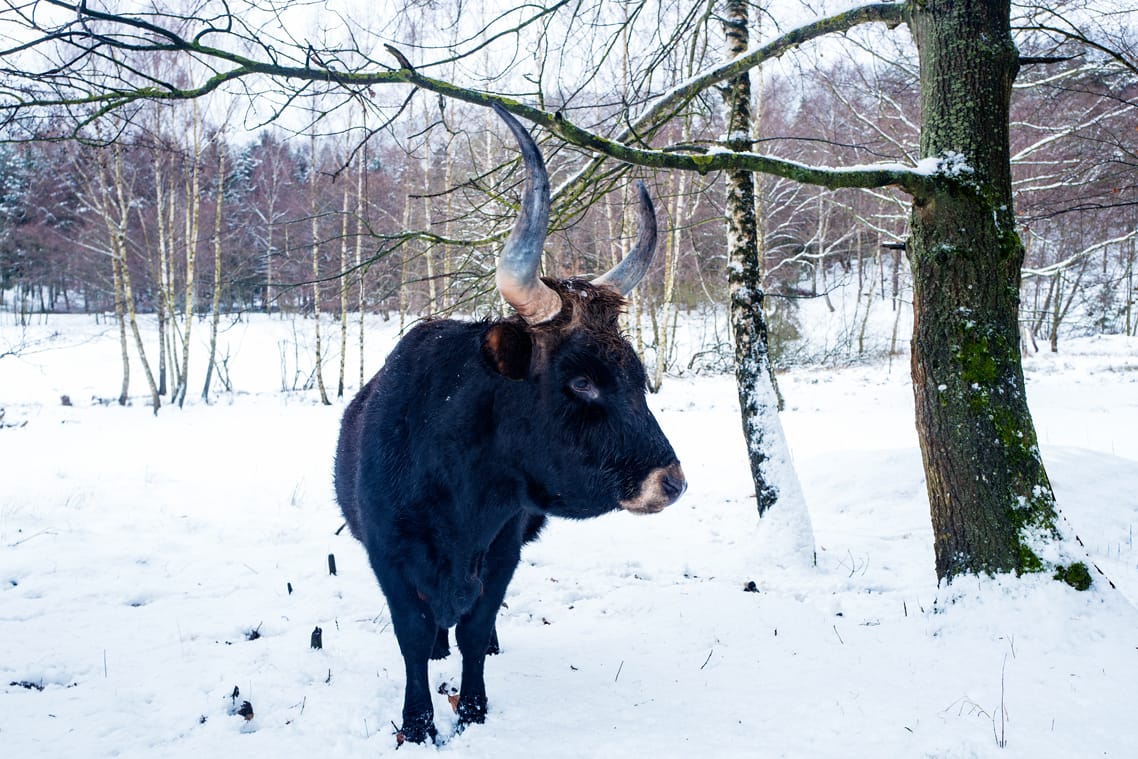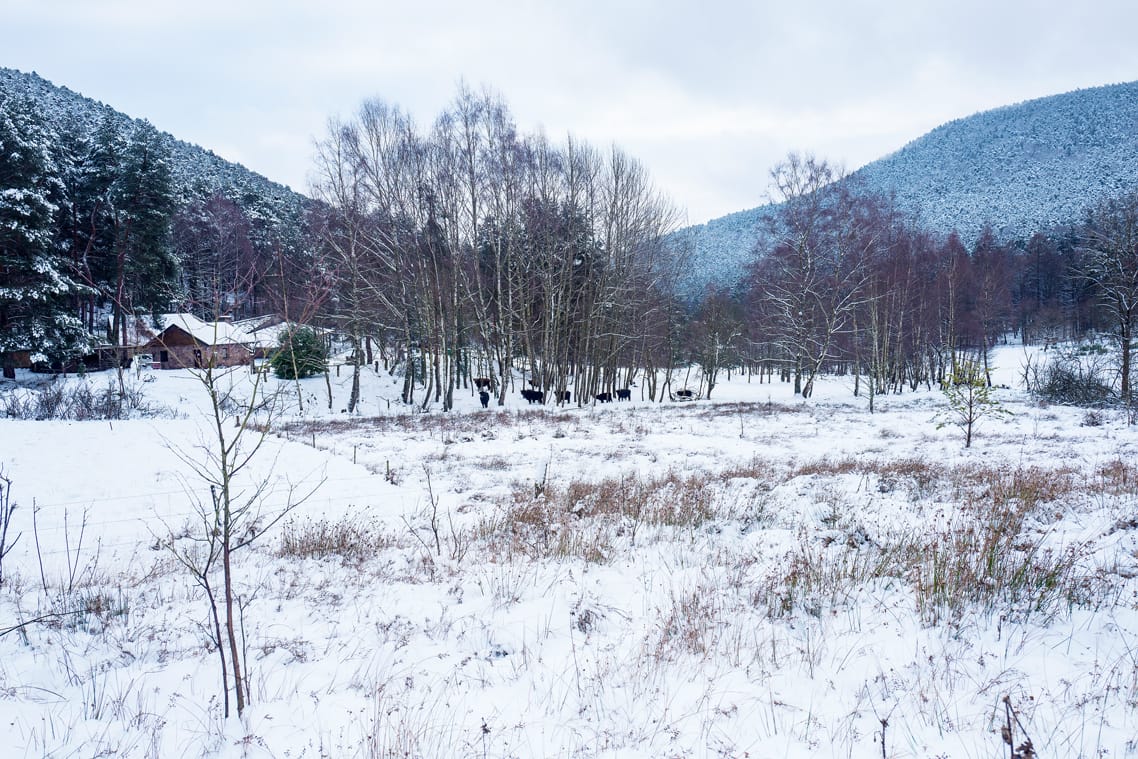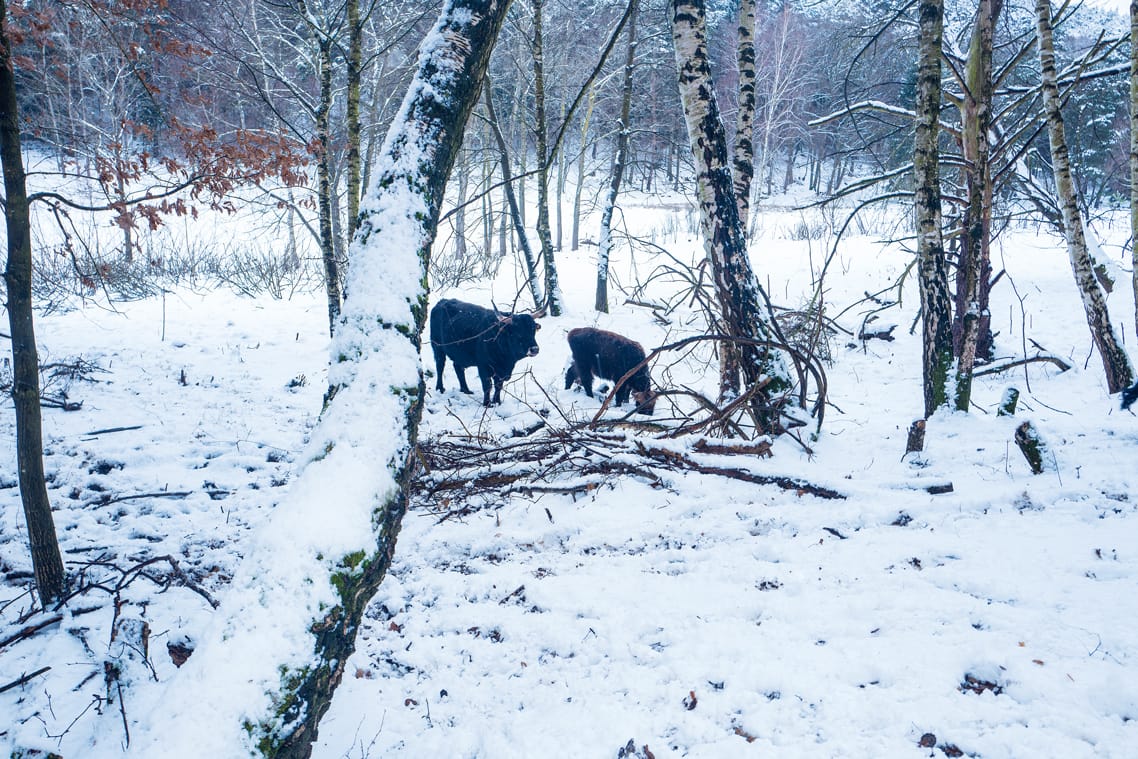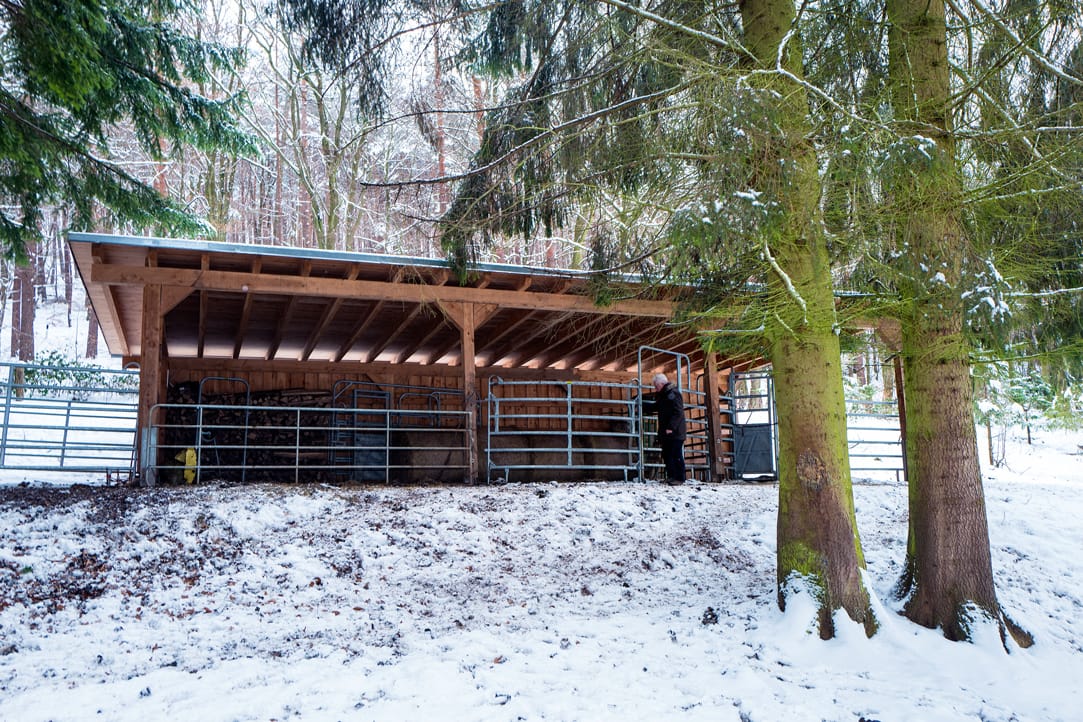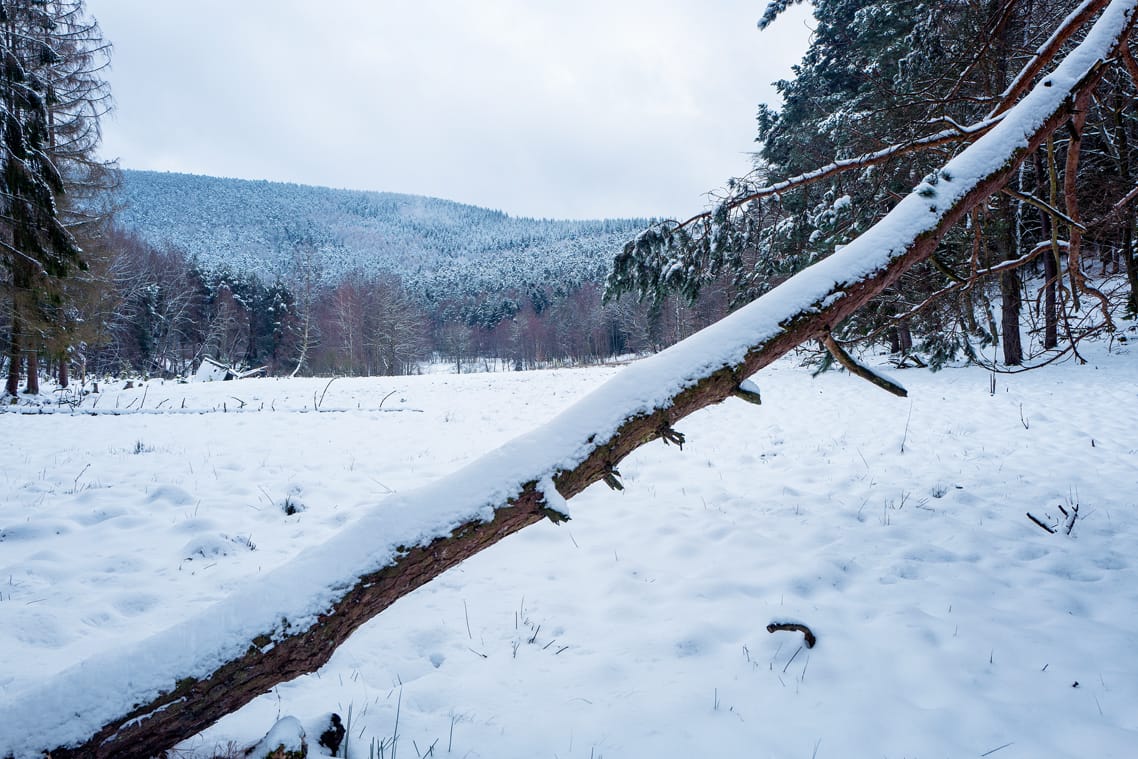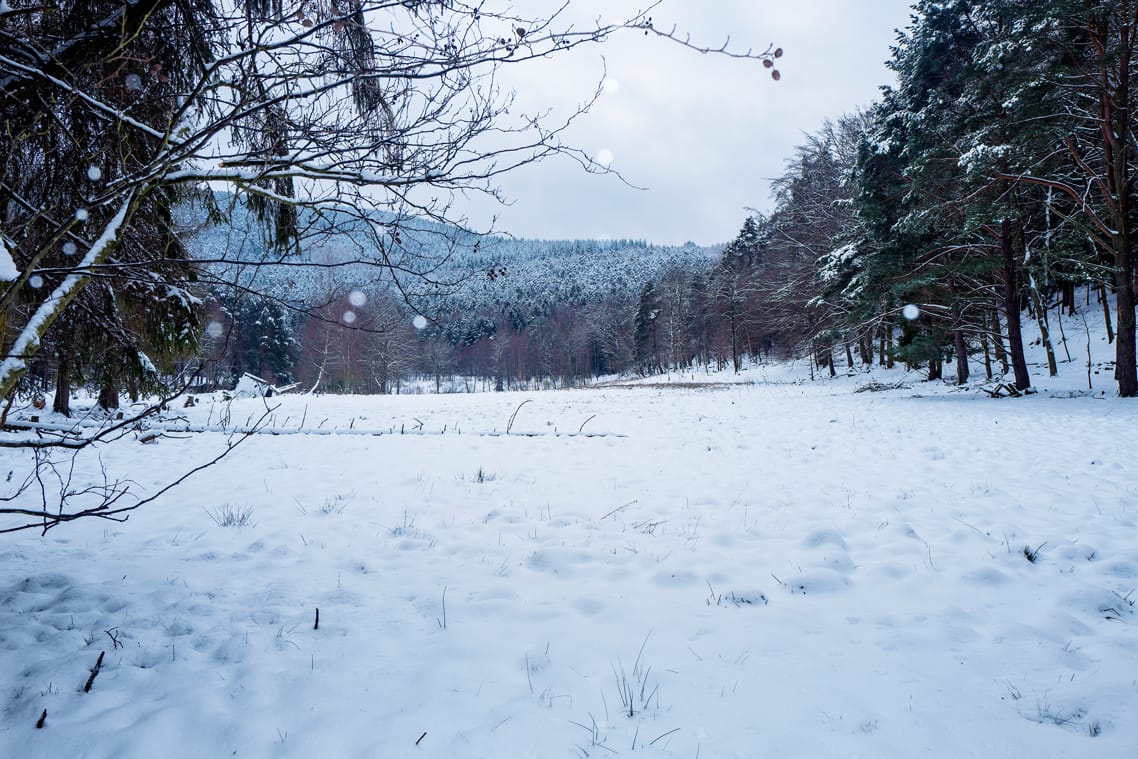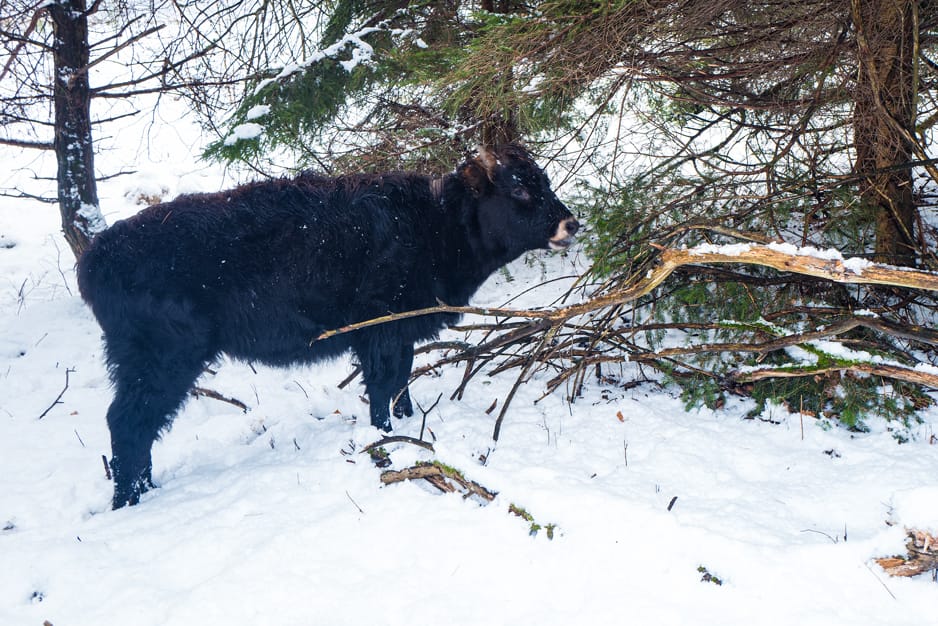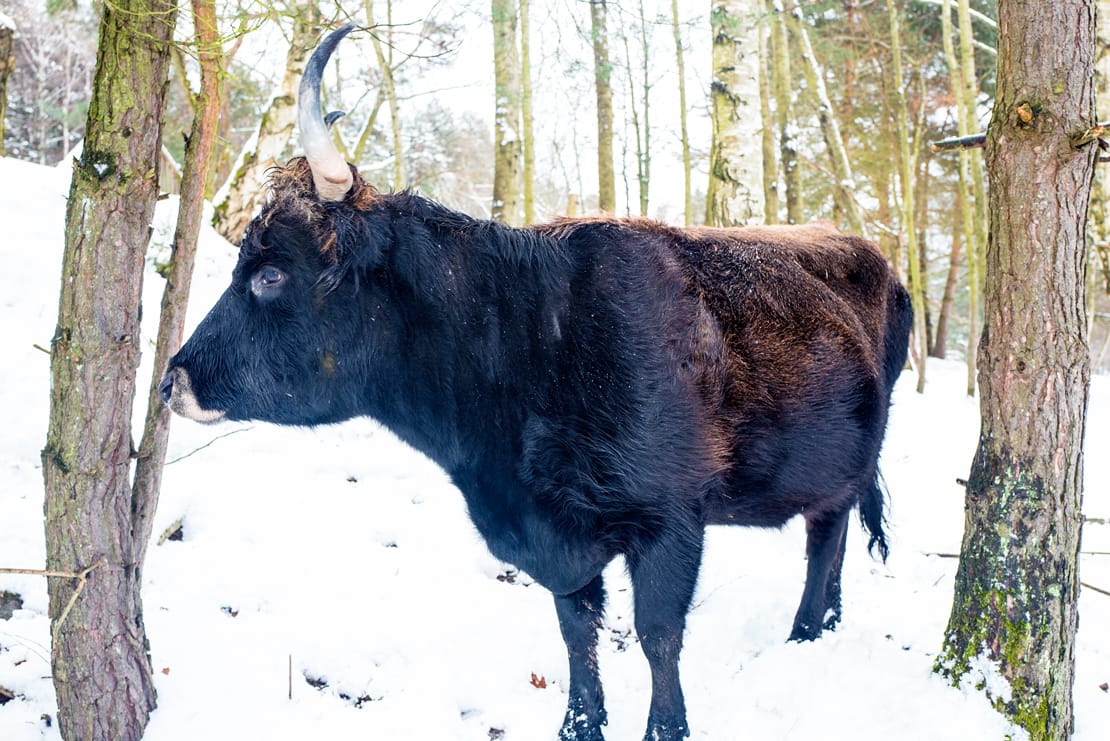In the southern Palatinate town of St. Martin a small herd of Aurochs roams free in the forest. Peter Hiery brought the majestic beasts here, who, in turn, have brought him solace.
Esmeralda stands completely motionless in the snow. Her magnificent 550-kilogram frame exudes peacefulness, while her long horns command attention and respect even at a safe distance. Peter Hiery never lets her and her thick, red-brown winter coat out of his sight. Esmeralda is part of a herd of Aurochs that roam the forest just outside the village of St. Martin year round—even in winter, when snow and freezing temperatures sweep across the land. Technically speaking, they are heck cattle, a breed of Auroch, which became extinct in the 17th century. They are fenced in here on a 44-acre plot of forest, the equivalent of roughly 62 soccer fields. The animals are a part of a unique grazing project. Or, as Peter Hiery says, “They design the landscape.” Here at the foot of the Palatinate forest.
The animals respond immediately to Peter Hiery, and with good reason: without him, they never would have been here. The early pensioner sits on the local council as a representative of the Freie Wähler (engl. Free Voters) party. He was astounded to learn of the costs that it would take to cultivate the area west of town. While vacationing in the French Massif Central in 2009, he saw a cattle breed that was reminiscent of the extinct Aurochs and an idea began to take root. He spoke to the people at Palatinate Forest-North Vosges Biosphere Reserve. The man at the desk said “you’re a gift from heaven.” At least that’s the way Hiery tells it years later, who approached the authorities in St. Martin with the line “We have 10 Aurochs and no land.” The municipality of St. Martin had land, but no Aurochs.

Peter Hiery
There were, of course, skeptics. And there still are today. It took a year and clever reasoning for Hiery and his supporters to bring the animals to the Palatinate. According to Hiery, the money to acquire the animals, build the fence and to pay the veterinarian all stem from compensation payments, i.e. payments made by companies in support environmental initiatives as compensation for having a construction project green lighted. Donations, too, help fund the project, but “not any public funds.” Still, the project had to overcome an array of bureaucratic hurdles, and Hiery, the “lone wolf,” pushed past all of them. He did have one distinct advantage, however. “I worked for a government agency for 40 years,” he says with a mischievous grin.

